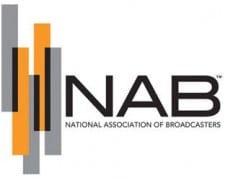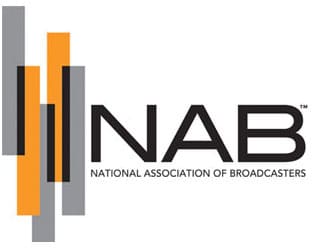 In response to a report released on a pilot project examining channel sharing by two broadcast television stations in LA as part of the broadcast spectrum incentive auction, NAB EVP Dennis Wharton said: “NAB is very appreciative of the effort on the part of APTS, CTIA and the stations KLCS and KJLA for their report on the channel sharing pilot. Many of the technical issues identified are very familiar to broadcasters as part of the industry’s extensive experience with multicasting. NAB agrees with the report’s observation that every individual broadcaster will need to determine for itself whether channel sharing is a worthwhile pursuit. As it notes, the report does not examine the business, legal and practical implications of sharing, which are novel and require careful consideration. NAB will continue to work closely with broadcasters to think through how best to address those complex issues.”
In response to a report released on a pilot project examining channel sharing by two broadcast television stations in LA as part of the broadcast spectrum incentive auction, NAB EVP Dennis Wharton said: “NAB is very appreciative of the effort on the part of APTS, CTIA and the stations KLCS and KJLA for their report on the channel sharing pilot. Many of the technical issues identified are very familiar to broadcasters as part of the industry’s extensive experience with multicasting. NAB agrees with the report’s observation that every individual broadcaster will need to determine for itself whether channel sharing is a worthwhile pursuit. As it notes, the report does not examine the business, legal and practical implications of sharing, which are novel and require careful consideration. NAB will continue to work closely with broadcasters to think through how best to address those complex issues.”
Non-commercial KLCS-TV and commercial KJLA-TV took part in an experiment to determine if the two stations can share the same airwaves without reducing the quality of their signals for viewers.
KLCS, virtual channel 58 (UHF digital channel 41), is the secondary PBS station in LA and owned by the Los Angeles Unified School District. KJLA, virtual channel 57 (UHF digital channel 49), is licensed to Ventura, CA and airs Spanish network LaTV. The station is owned by LATV Holdings, LLC (under the control of Entravision CEO Walter Ulloa).
The FCC wants broadcasters to consider sharing channels as part of the agency’s plan to reclaim spectrum from local TV stations and then auction it off to wireless companies. The FCC is looking to auction spectrum worth $25 billion and use the proceeds to build a new national network for law enforcement and public safety workers. The potential cut for broadcasters from the sale is estimated to be $1.75 billion.
Francis Wilkinson, VP/GM KJLA, tells RBR-TVBR that both KLCS and KJLA broadcast from Mt Wilson, the main antenna farm for Los Angeles. The towers are only about 1/4 mile apart. “However that’s irrelevant because the test is being conducted by using KLCS’s transmitter and dividing their spectrum in various ways showing that 2 separate channels can broadcast over 1 station’s airwaves with a combination of HD and SD streams. PSIP generation continues to show KJLA’s streams as being on KJLA’s virtual channel 57 so this is seamless to viewers.”
NAB also published this blog post by NAB Executive Vice President of Strategic Planning Rick Kaplan regarding the channel sharing report. He mentions: “The report confirms that channel sharing is technically feasible. Many broadcasters have been doing it for years through multicasting. In fact, the challenges for channel sharing will primarily be on the business side, as there are complex financial and legal arrangements that must be addressed.
We are already hearing great fanfare from the FCC regarding the report. It’s a chance for FCC Chairman Tom Wheeler to continue to encourage broadcasters to channel share – having one’s cake and eating it too, as he puts it – in order for the FCC to reclaim additional spectrum for its upcoming incentive auction.
Most interesting, however, is that, at the same time the chairman is making a big channel sharing push, he is working to eliminate another kind of sharing arrangement on which broadcasters have come to rely. Specifically, on Monday the FCC is scheduled to vote on a proposal that will no longer allow television broadcasters to enter into sharing arrangements called Joint Sales Agreements (JSAs). Not only will the new rule prohibit such agreements going forward, but the chairman also seeks to apply the rule retroactively, quashing the scores of sharing arrangements the FCC has been steadily approving for years.
It doesn’t take a Wall Street baron – which local broadcasters certainly are not – to recognize that approach is dead wrong.”






Broadcasters who go the channel-sharing route will be limiting their future prospects. The next step in the evolution of television, Ultra HD (4K), will require all of the bandwidth of one 6MHz channel, as Japan’s NHK 4K transmissions have recently shown. Even with just present-day HD, channel-sharing compromises picture quality.
Broadcast spectrum should remain broadcast spectrum. The cell companies are soon going to discover that they have too much spectrum. Cell companies should have more sectors per tower and more towers to make smaller cells. Cell companies should limit their subscriber’s speed to a reasonable speed such as 8 Mbps because they do not have unlimited resources.
Comments are closed.